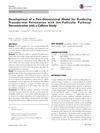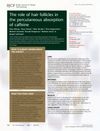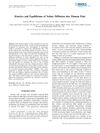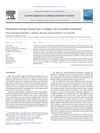A Composite Model for the Transport of Hydrophilic and Lipophilic Compounds Across the Skin: Steady-State Behavior
September 2018
in “
Journal of pharmaceutical sciences
”
skin diffusion model porous pathway polar solutes stratum corneum lipid/corneocyte matrix appendageal shunts hair follicles sweat ducts transcellular route lipid-phase transport lipid bilayer micropore radius steady-state permeabilities desorption rates stratum corneum/water partition coefficients skin model pores polar molecules outer skin layer lipid matrix shunts hair roots sweat glands cellular route fat transport fat layer pore size steady-state desorption partition coefficients
TLDR The model better predicts how water-loving and fat-loving substances move through the skin by including tiny pores and hair follicle paths.
The study developed a composite model for the transport of hydrophilic and lipophilic compounds across the skin, focusing on steady-state behavior. It incorporated two main pathways: aqueous shunts in hair follicles and transcellular transport through lipid bilayer defects. The model effectively explained steady-state permeabilities, desorption rates, and partition coefficients for both polar and lipophilic solutes using in vitro data from excised human skin. It aimed to predict skin transport for a wide range of solutes, providing valuable insights for dermal risk assessments and product development. The model's predictions were consistent with experimental data, highlighting the importance of the follicular pathway in transdermal drug delivery.







